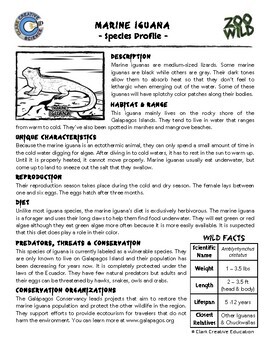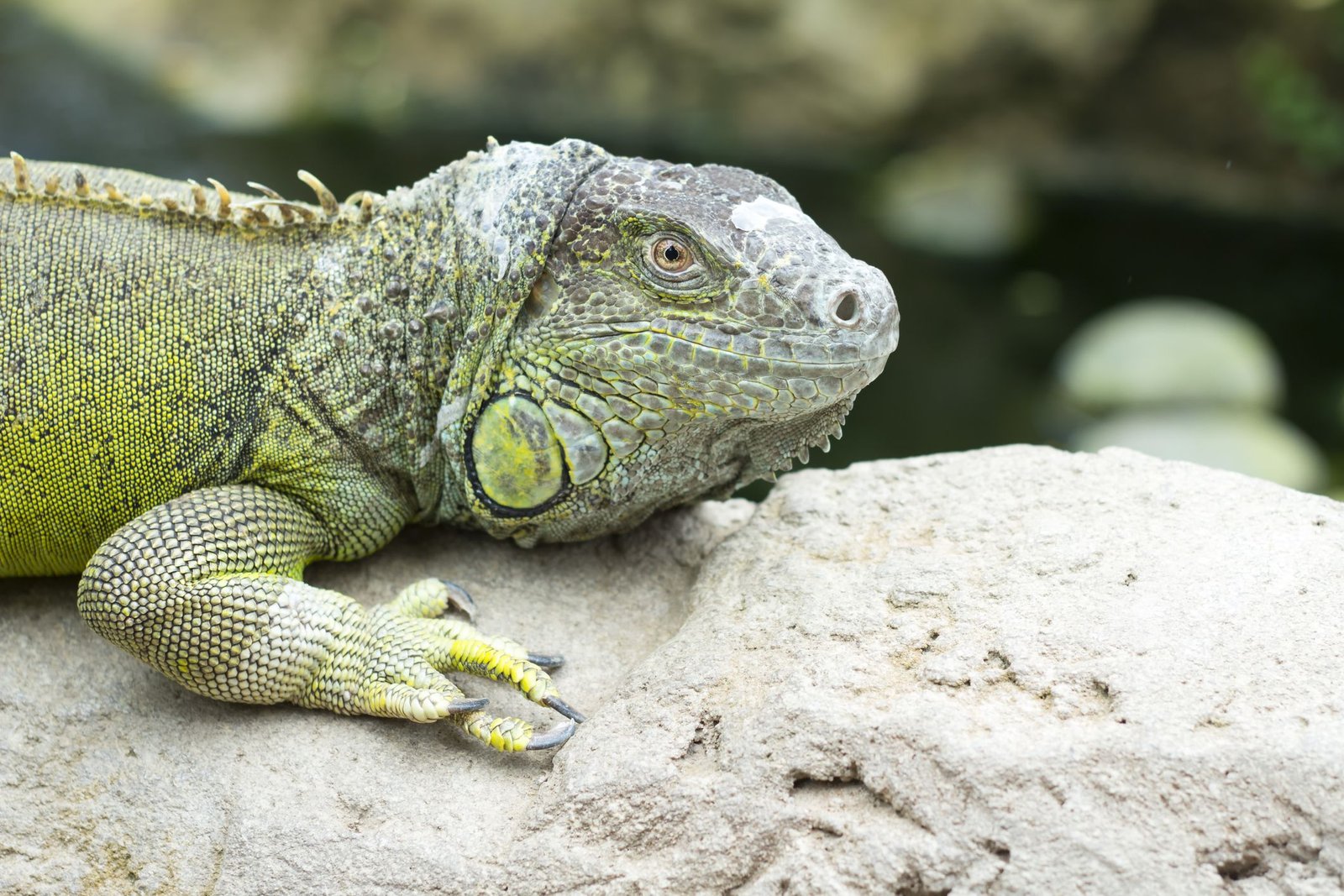Iguanas are some of the largest lizards found in the Americas, with their whiplike tail making up about half of their length. They are cold-blooded, egg-laying reptiles with the ability to adapt to their environment.
Welcome to our species profile on the iguana! Iguanas are fascinating creatures that belong to the lizard family. Known for their large size and distinct tail, these reptiles are found primarily in the Americas. We will explore the distinguishing features of iguanas, their behavior and temperament, as well as their habitat and dietary preferences.
From their ability to detach their tails to their excellent eyesight, iguanas have many interesting traits that make them unique. Join us as we delve into the world of these majestic creatures and learn more about their incredible adaptations and characteristics.
Introduction To Iguanas
Iguanas are fascinating creatures that belong to the lizard family. They are known for their unique physical features and adaptability to various environments. In this section, we will delve into the description, physical characteristics, and habitat of iguanas, providing a comprehensive profile of these remarkable reptiles.
Description Of Iguanas
Iguanas are some of the largest lizards found in the Americas. Their distinctive whiplike tail makes up about half of their total length. With their stout bodies and robust limbs, these reptiles possess a striking appearance that sets them apart from other species. Their coloration varies, ranging from shades of green to dusty brown. Juveniles often exhibit more vibrant colors, with green or blue-green bodies adorned with a row of black chevrons.
Physical Characteristics
Iguanas have a robust build, characterized by their stocky stature. Their scaly skin is covered in warts, giving them a distinct texture. One of the most notable physical features of iguanas is the presence of dorsal spines. In some species, these spines can be brilliantly colored in hues of turquoise blue. Females generally have smaller spines along their backs compared to males. Furthermore, iguanas possess excellent eyesight, enabling them to easily spot prey or detect potential threats from a considerable distance.
Habitat And Adaptability
Iguanas are highly adaptable creatures, capable of thriving in a variety of habitats. They are primarily found in tropical regions of the Western Hemisphere, including parts of Central and South America, as well as the Caribbean. These lizards are often seen in dense forests, rainforests, and near bodies of water such as rivers or lakes.
Due to their ability to adapt, iguanas have successfully colonized some non-native areas, such as certain islands in the Caribbean. They have also been introduced to other parts of the world, including Florida and Hawaii.
Iguanas are cold-blooded reptiles, meaning their body temperature is regulated by external factors. They bask in the sunlight to absorb heat and can be frequently observed sunning themselves on rocks or tree branches. This behavior helps them maintain their core body temperature, which is crucial for their overall well-being.
In their natural habitat, iguanas are predominantly herbivorous, feeding on various vegetation such as leaves, fruits, and flowers. However, they may occasionally consume insects or small vertebrates as well. Their adaptability to different food sources contributes to their survival in diverse environments.

Different Species Of Iguanas
Iguanas, known for their distinctive appearance and fascinating behaviors, encompass various species that inhabit different regions. Each species has its own unique characteristics and adaptations that make them a wonder to observe. In this article, we will explore three popular species of iguanas: green guana, black spiny-tailed guana, and mona ground guana.
Green Iguana
One of the most well-known and iconic species of iguanas is the green iguana (Iguana iguana). These remarkable lizards are native to Central and South America, thriving in tropical rainforests and coastal regions.
- Physical Characteristics:
| Size: | Green iguanas can grow up to 6.5 feet in length, making them one of the largest lizard species. |
| Color: | Adults typically display a vibrant green color, which aids in blending with their surroundings. |
| Habitat: | They are excellent climbers and prefer arboreal habitats, such as trees and branches. |
This species is known for its docile nature and can become an engaging pet for reptile enthusiasts, although its care requirements can be demanding.
Black Spiny-tailed Iguana
The Black Spiny-Tailed Iguana (Ctenosaura similis) is a reptile native to Mexico and Central America. They are often found in various habitats, including tropical forests, rocky areas, and coastal regions.
- Physical Characteristics:
| Size: | Adult black spiny-tailed iguanas can reach lengths of about 3.5 to 5 feet. |
| Color: | They possess a dark-colored body with prominent spines along their tails, providing them with effective defense mechanisms. |
| Diet: | Black Spiny-Tailed Iguanas are primarily herbivorous, feeding on leaves, fruits, flowers, and shoots. |
These iguanas are known for their agility and adaptability, allowing them to thrive in various environments within their range.
Mona Ground Iguana
Endemic to Mona Island, located in the waters of Puerto Rico, the Mona Ground Iguana (Cyclura cornuta stejnegeri) is a critically endangered species. They inhabit dry coastal areas and xeric scrubland, adapting to the arid conditions.
- Physical Characteristics:
| Size: | Mona ground iguanas can grow up to 20 inches in length, making them a relatively smaller species compared to their counterparts. |
| Color: | They display a combination of brown, gray, and yellowish hues, allowing them to blend seamlessly with their rocky surroundings. |
| Conservation Status: | Due to habitat loss and predation by invasive species, the Mona Ground Iguana is critically endangered and requires urgent conservation efforts. |
The Mona Ground Iguana is a highly specialized species, reflecting the fascinating diversity within the iguana family.
In conclusion, the world of iguanas showcases remarkable diversity, with each species offering its own unique set of characteristics. From the impressive Green Iguana to the resilient Black Spiny-Tailed Iguana and the critically endangered Mona Ground Iguana, these reptiles provide insight into the marvels of nature’s adaptation. Whether in the wild or as companions, iguanas continue to captivate the attention and curiosity of individuals worldwide.
Interesting Facts And Behaviors
When it comes to interesting facts and behaviors, iguanas are fascinating creatures with unique features, specific diet and nutrition requirements, and intriguing behavior and temperament. Let’s delve into these aspects and learn more about these remarkable lizards.
Unique Features
Iguanas have several unique features that set them apart from other reptiles:
- Whiplike Tail: The whiplike tail of an iguana makes up about half of its length and aids in balance and defense.
- Dorsal Spines: Adult iguanas have dorsal spines that can be a brilliant turquoise blue, adding to their distinctive appearance.
- Colorful Juveniles: Juvenile iguanas are more colorful, often sporting a green or blue-green body with a row of black chevrons.
Diet And Nutrition
Iguanas have unique dietary needs and are primarily herbivorous. Their diet consists mainly of:
- Leafy Greens: Iguanas thrive on a diet rich in leafy greens like collard greens, mustard greens, and dandelion greens.
- Vegetables and Fruits: They also enjoy vegetables like carrots and squash, as well as fruits like strawberries and mangoes.
- Supplements: Calcium and vitamin D3 supplements are essential for maintaining bone health.
Behavior And Temperament
Iguanas exhibit interesting behaviors and have unique temperaments.
- Detachable Tails: When caught by a predator, iguanas can detach their tails and grow new ones as a defense mechanism.
- Excellent Eyesight: They have excellent eyesight, allowing them to spot prey or detect danger from a long distance.
- Basking Behavior: Iguanas are known for their basking behavior, where they soak up the sun’s warmth to regulate their body temperature.
- Territorial Nature: Male iguanas are territorial and will fiercely defend their territories from other males.


Frequently Asked Questions On Iguana: Species Profile
What Type Of Species Is A Iguana?
Iguanas are reptiles known for their large size and distinctive whiplike tails. They are cold-blooded, egg-laying animals that can adapt well to different environments.
What Are The Distinguishing Features Of Iguana?
The distinguishing features of an iguana include a large and stout body, dusty brown back legs/sides, and a whiplike tail. The spines along its back can be brilliant turquoise blue. Juveniles are more colorful, with a green or blue-green body and a row of black chevrons.
Are Iguanas Generalist Species?
Yes, iguanas are generalist species that can adapt well to different environments. They are cold-blooded lizards known for their large size and ability to lay eggs. Iguanas have a whiplike tail that makes up about half of their length.
What Are 3 Interesting Facts About Iguanas?
Iguanas are some of the largest lizards in the Americas, with their tail making up half of their length. They can detach their tails and grow another one. Iguanas have excellent eyesight and can spot prey or danger from a distance.
Conclusion
In a nutshell, iguanas are fascinating creatures that make for a unique addition to the reptile world. With their large size and distinctive features, such as their whiplike tail and colorful spines, they are hard to miss. As cold-blooded animals, they have mastered the art of adaptability and can thrive in various environments.
Whether it’s their ability to detach their tails or their keen eyesight, there’s no denying that iguanas are truly remarkable. So, if you’re looking to learn more about these herbivorous lizards, dive into the world of iguana species profiles.


